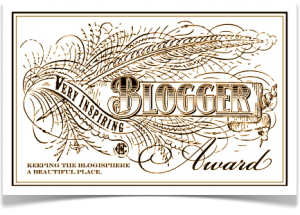The Mass-Media Madhouse
(Press-Central For Handy Soundbites, Useful Info,
And A Good Wet-Your-Pants Laugh)
Home / The Mass-Media Madhouse
(Press-Central For Handy Soundbites, Useful Info,
And A Good Wet-Your-Pants Laugh) / Smead Organomics / As Published In Smead Organomics --
Spring Cleaning Your File Cabinet
As Published In Smead Organomics —
Spring Cleaning Your File Cabinet

Spring cleaning isn’t just for home — and it isn’t just for spring, either! Your home and office filing systems need the occasional organizational deep-clean, just like your kitchen cabinets and closets.
Clear Out The Clutter
Your filing system is a lot like your junk drawer. Every time you find a reference item that you think might be useful, you stick it in the drawer — some of those documents come in handy later on, others just take up space. Every once in a while, you have to clear the decks and start fresh with your paper storage (otherwise your folders become overstuffed and unmanageable). So let’s begin!
To start spring cleaning your office, empty every folder out of your file drawer and ask if that category is still meaningful and relevant to your life — keeping in mind that completed projects, old client files, and obsolete reference topics may be able to go away. Then sort through each “keeper” folder, cleaning out unnecessary/outdated paperwork. Only current and relevant documents should reside in your active files — if you don’t use it all the time (but may possibly refer to that information again in the future), place the item in your archive files. If not (and there is no legal reason for you to keep it), toss or shred.
A New Coat Of Paint
While you’ve got your file system emptied, take a minute to look at your supplies and see if they pass muster. Are your folders getting old and raggedy? It might be time to swap them for new, clean files. Are your labels a mess? Too many cross-outs and write-overs make it hard to find the folder you need — get some fresh labels and neatly type or print the correct title for each. Are your filing cabinets dysfunctional, with dented and hard-to-open drawers? If you have to fight with your equipment, consider a replacement.
Also examine your naming convention, double-checking to see that your files are labeled in a way that makes sense. The goal is to start each file with the larger category to which it belongs (“utilities”) — then add a descriptor that lets you know exactly what paperwork that folder contains (“utilities: water” or “utilities: electric”) — moving from general to more specific. Color-coding your files and/or labels is another great way to distinguish categories of files from one another.
Put It All Back In Order
Finally, it’s time to get each document back in its home. Once you have all of your file folders labeled and placed in the drawer, look around and see if there are any loose piles of paper sitting out — on a desk, shelf, or credenza. Go through each stack and clear out the junk (following the guidelines in our first step above) — then file those papers in your existing categories. By the time you’re done, every document should have a logical home. And if you missed “spring” this year, don’t worry — you can clean up your paper management act any time you need to. Don’t put it off until next year!
Click here for reuse options!Copyright 2001 RamonaCreel.com
 PS: Wanna instantly rack up some serious virtual cred? I've made it easy for you to share this content with your social networking friends, e-mail it to your peeps, or republish it in your own blog (thereby showing off how smart you are) with these links.
PS: Wanna instantly rack up some serious virtual cred? I've made it easy for you to share this content with your social networking friends, e-mail it to your peeps, or republish it in your own blog (thereby showing off how smart you are) with these links.
(iCopyright widget here)
"I Have More To Say About This... No Surprise!"
If you would like to reprint this page, please contact me





